
On Aug. 6, the Advisory Panel on the History of the 20th Century and on Japan’s Role and World Order in the 21st Century submitted its report to Japanese Prime Minister Shinzo Abe as he prepared to make a major statement about Japan’s World War II history on the eve of the 70th anniversary of his country’s surrender.
While the majority of the panel accepted the term “aggression” to define Japan’s role in the Second World War, there were dissenting views. According to the panel report, the reasons for this were as follows:
1) "the definition of 'aggression' has not been established under international law;
2) there is objection from a historical perspective to stating that the series of events from the Manchurian Incident onward constituted 'aggression';
3) there is a sense of reluctance towards stating that only the actions of Japan constituted ‘aggression’ while other countries were taking similar actions.”
Below is an adapted excerpt of the key passages on Japan’s role in World War II from the report followed by a list of the advisory panel’s members:
TOKYO: How should we view the history of the world and Japan in the 20th century?
From Imperialism to International Cooperation
To look back at the 20th century, we would like to briefly revisit the 19th century. What characterizes the 19th century is the overwhelming superiority obtained by the West over the rest of the world through technological innovation. The defeat of China, which at many stages in world history had been the largest country in the world and still boasted the largest economy in around 1830, by Great Britain in the Opium War -- an extremely unjust war -- was a monumental event in world history that highlighted this widening technological gap.
This technological gap became the backdrop for the colonization, largely by Western countries, of the rest of the world. In Asia, Japan, which modernized itself in order to avoid being colonized, made Taiwan its colony by defeating China in the Sino-Japanese War (1895), while Germany, which had not been much engaged in Asia, also brought the Shandong Province under its sway when it secured a lease on Jiaozhou Bay, using the murder of German missionaries as the pretext (1898). Even the United States, an ex-colony that had won its independence and often opposed colonialism as a result, brought the Philippines into its domain as a colony through its victory in the Spanish-American War (1898).
However, the beginning of the 20th century saw the brakes placed on colonization. The Japanese victory in the Russo-Japanese War in 1905 not only stopped Russian expansion, but also encouraged much of the indigenous population in the non-Western lands colonized by the West. There were many among the leaders of the Asian and African countries that achieved independence just before and after 1960 who had been deeply moved to hear stories of the Russo-Japanese War from their forbearers.
Putting further brakes on colonization was the principle of “self-determination,” one of the Fourteen Points for world peace put forward by Woodrow Wilson near the end of World War I. Self-determination was initially a concept aimed at Europe, but it resonated in Asia as well, and became a catalyst for the March First Incident in Korea and the May Fourth Movement in China and the like.
However, many of the Great Powers had no intentions of giving up their colonies, and as a result, a general agreement was reached under which there would be no more expansion of their colonies. In the Asia-Pacific region, the Nine-Power Treaty was concluded, which guaranteed that China’s unification and independence would be respected.
In the meantime, technological innovation made war an increasingly disastrous and massive undertaking. By the end of the 19th century, movements had emerged to settle disputes by arbitration. As World War I took a toll on an unprecedented scale in human history, the movement for the outlawry of war aiming at denying war under international law further gathered force. The Covenant of the League of Nations imposed “obligations not to resort to war” on its members, and the 1928 General Treaty for Renunciation of War as an Instrument of National Policy (the Kellogg–Briand Pact) outlawed war as an instrument of national policy. These developments were paralleled by the Washington Naval Conference in 1922 and the London Naval Conference in 1930, where limiting naval armament was discussed, resulting in a measure of success.
During the 1920s, the Great Powers refrained from military expansion and poured their energy into economic activities. Japan also saw the development of government by political parties, and party governments held power continuously from 1924 to 1932, while the Universal Manhood Suffrage Act was enacted in 1925. On the diplomatic front as well, diplomacy focused on international cooperation, known as the Shidehara Diplomacy, became mainstream.
However, the stability of the 1920s was a fragile one. In the world, the United States, which should have been the leader, did not join the League of Nations. In Japan, the superiority of political parties lacked an institutional foundation, and the military was very much an independent power. Although those favoring international cooperation had the upper hand, their influence was damaged by the turn of events such as the defeat of the Racial Equality Proposal at the Paris Peace Conference and the Congressional rejection of Japanese for naturalization in the United States, making them ineligible for immigration quotas.
From the Great Depression to World War II
The onset of the Great Depression in the United States in 1929 brought great changes to the world as well as to Japan. The German economy, which had relied on funds flowing in from the United States, collapsed, and the Nazi and Communist Parties made gains there.
The high tariffs policy adopted by the United States dealt a massive blow to Japanese exports to the United States. Great Britain and France also proceeded to form economic blocs of their own. In Japan, the influence of people who favored cooperation with Great Britain and the United States waned, while forces, which believed that Japan had no choice but to expand through the use of force, were in the ascendance. In particular, mid-tier officers in the Army worried about the challenge of Chinese nationalism to Japanese interests in Manchuria and the revival of the Soviet Union as a military power. When they staged the Manchurian Incident to secure Japanese interests by force, the political parties and those favoring international cooperation no longer had the power left to keep this under their control.
By then, Italy had already come under Mussolini’s dictatorship, and Stalin’s dictatorship was firmly in place in the Soviet Union. In Germany, the Nazis increased the number of its seats in the Reichstag. The notion was spreading that this was no longer the era of liberal democracy.
A policy of building a powerful totalitarian political regime at home and demanding redistribution of the colonies from the “haves” such as Great Britain and the United States abroad gradually came to be accepted.
Thus, after the Manchurian Incident, Japan expanded its aggression against the continent, deviated from the post-World War I shift towards self-determination, outlawry of war, democratization, and an emphasis on economic development, lost sight of the global trends, and caused much harm to various countries, largely in Asia, through a reckless war. In China in particular, this created many victims across wide areas. In addition, the military sent out soldiers to the frontlines without even minimal supplies and weaponry, and did not allow them to be held as prisoners of war, causing their deaths in many cases. Not only Hiroshima, Nagasaki and Tokyo, the target city of Great Air Raid, but also many other cities all over Japan were reduced to ashes as they were subjected to air raids with fire bombs. Okinawa in particular turned into a horrible battlefield, as one-third of the entire population there died. In the colonies, Japan acted counter to the tide of self-determination. Colonial rule became particularly harsh from the second half of the 1930s on.
It must be said that the responsibilities of the Japanese government and military leaders from the 1930s and beyond are very serious indeed.
To be sure, many nations in Asia gained independence as a result of the Japanese war from the 1930s up to 1945. Nevertheless, many decisions were made in the name of self- preservation and self-defense, (And of course the substance and the direction of the self- preservation and self-defense were wrong.) and rarely were they made to liberate Asia. Indeed, there were Japanese people who fought to liberate Asia, and the independence of Asian colonies progressed as the outcome. However, it is inaccurate to claim that Japan fought to liberate Asia as a matter of national policy.
Members of the Advisory Panel on the History of the 20th Century and on Japan’s Role and World Order in the 21st Century
Taizo NISHIMURO #Chairman
President and CEO, Japan Post Holdings Co., Ltd.
Chairman, The Japan Institute of International Affairs (JIIA)
Shinichi KITAOKA #Deputy Chairman
President, International University of Japan (IUJ)
Keiko IIZUKA Editor, International News Department, Editorial Bureau
The Yomiuri Shimbun
Yukio OKAMOTO Senior Fellow, MIT Center for International Studies
Shin KAWASHIMA Professor, Graduate School of Arts and Sciences
The University of Tokyo
Yorihiko KOJIMA Chairman of the Board, Mitsubishi Corporation
Yoshiko KOJO Professor, Graduate School of Arts and Sciences,
The University of Tokyo
Takashi SHIRAISHI President, National Graduate Institute for Policy Studies
(GRIPS)
Rumiko SEYA President, Japan Center for Conflict Prevention (JCCP)
Director, JCCP M Co., Ltd
Terumasa NAKANISHI Professor Emeritus, Kyoto University
Masashi NISHIHARA President, The Research Institute for Peace and Security
Masashi HANEDA Professor, The University of Tokyo
Yoshito HORI President, GLOBIS University
Managing Partner, GLOBIS Capital Partners
Kunihiko MIYAKE Visiting Professor, Ritsumeikan University
Research Director, The Canon Institute for Global Studies
Masayuki YAMAUCHI Professor Emeritus, The University of Tokyo
Professor, Meiji University
Takao YAMADA Columnist for the Mainichi Newspapers
Also on WorldPost:
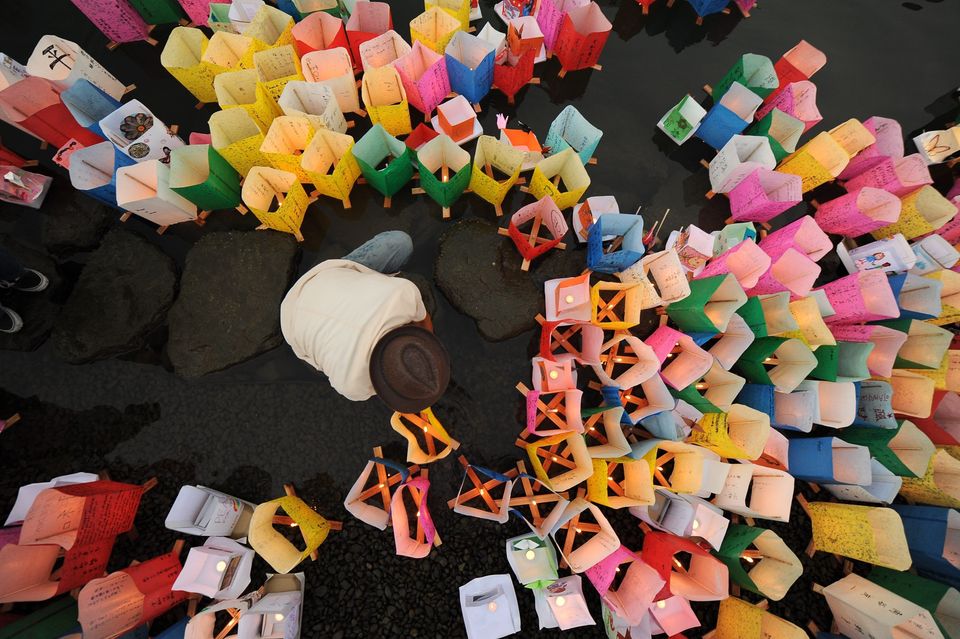
A participant takes part in the Peace Message Lantern Floating Ceremony, held to console the souls of atomic bombing victims, at the Hiroshima Peace Memorial Park in Japan on Aug. 6, 2015.
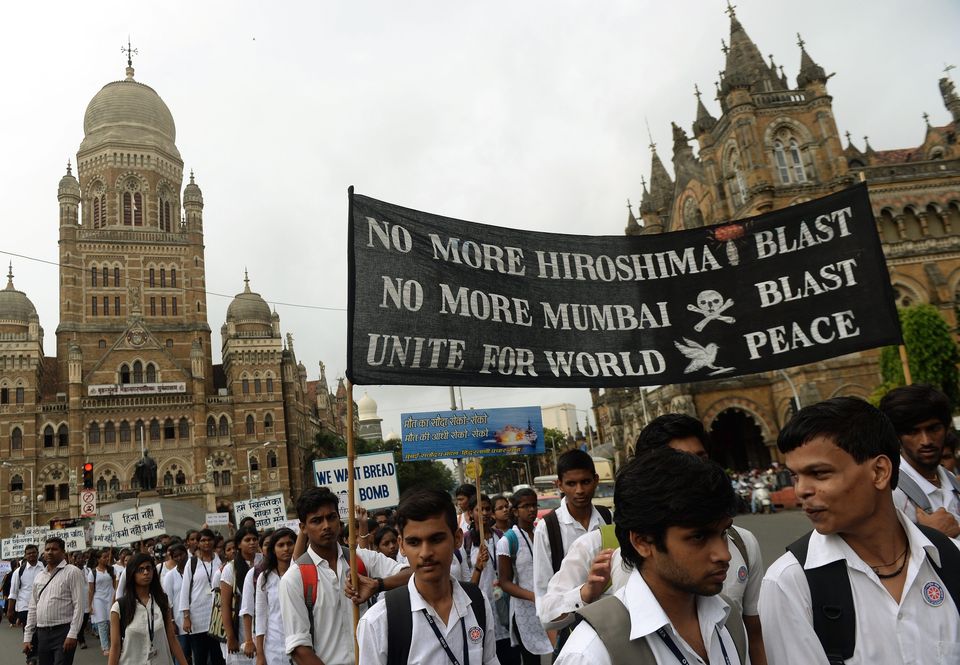
Students take part in a rally to mark Hiroshima Day in Mumbai, India, on Aug. 6, 2015.

U.S. Ambassador to Japan Caroline Kennedy and Under Secretary for Arms Control and International Security Rose Gottemoeller attend a ceremony commemorating the atomic bombing victims at the Hiroshima Peace Memorial Park in Japan on Aug. 6, 2015.
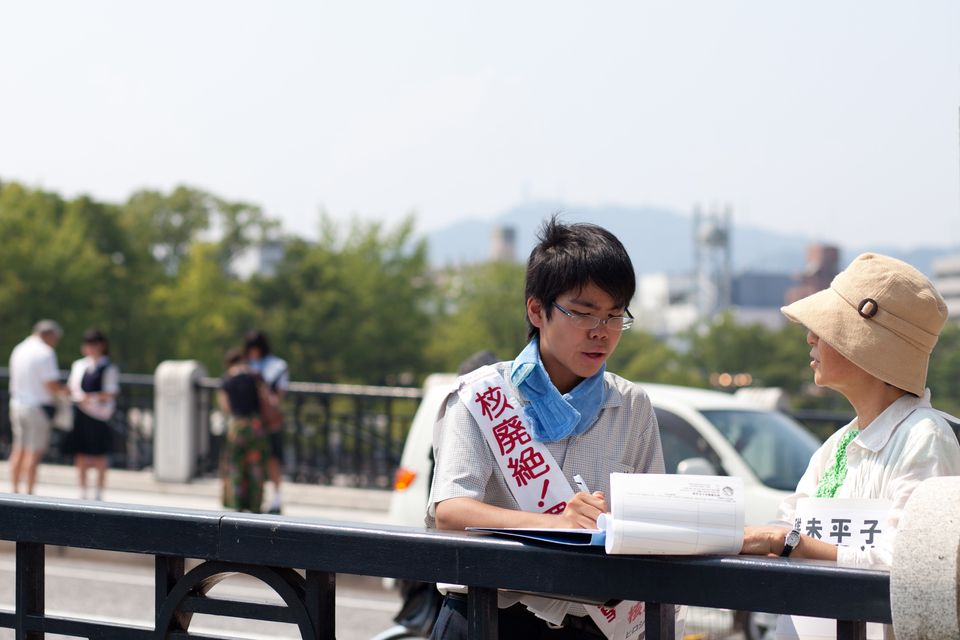
Students collect signatures for a nuclear abolition campaign in Hiroshima, Japan, on Aug. 4, 2015.
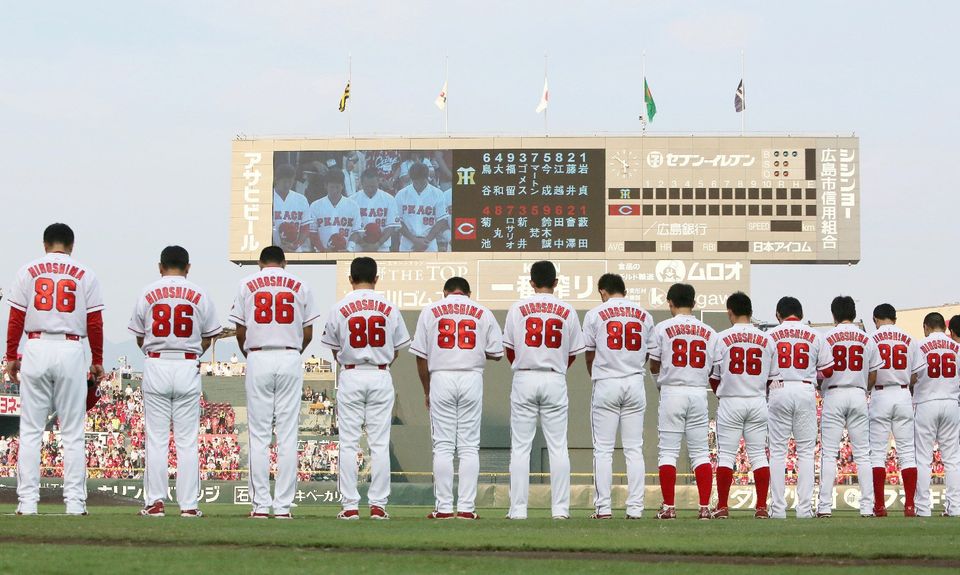
Professional Japanese baseball players Hiroshima Carp, wearing the number 86 on their uniforms, offer prayers for atomic bombing victims before a game in Hiroshima, Japan, on Aug. 6, 2015.
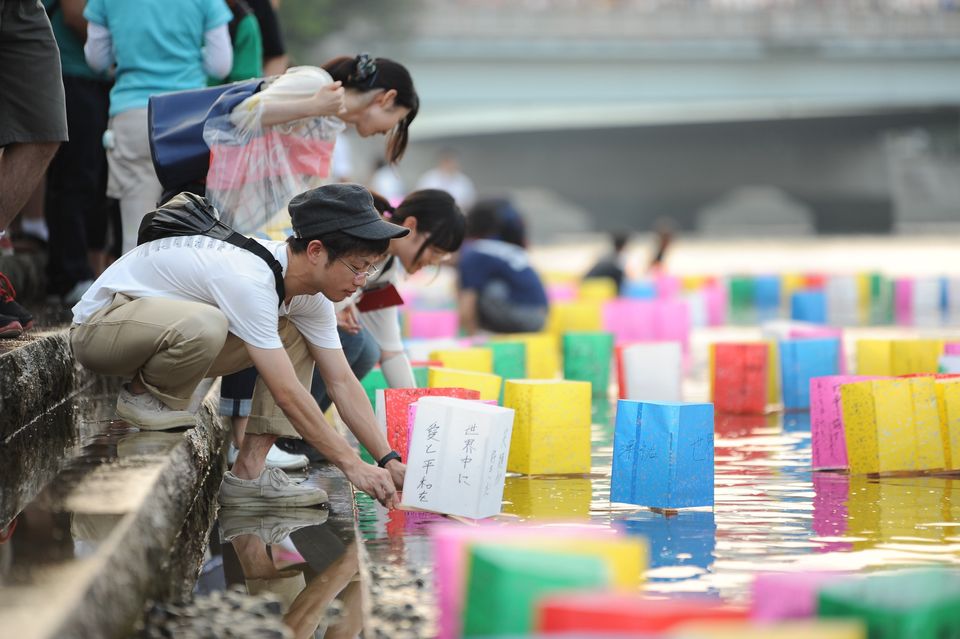
People take part in the Peace Message Lantern Floating Ceremony, held to console the souls of atomic bombing victims, at the Hiroshima Peace Memorial Park in Japan on Aug. 6, 2015.
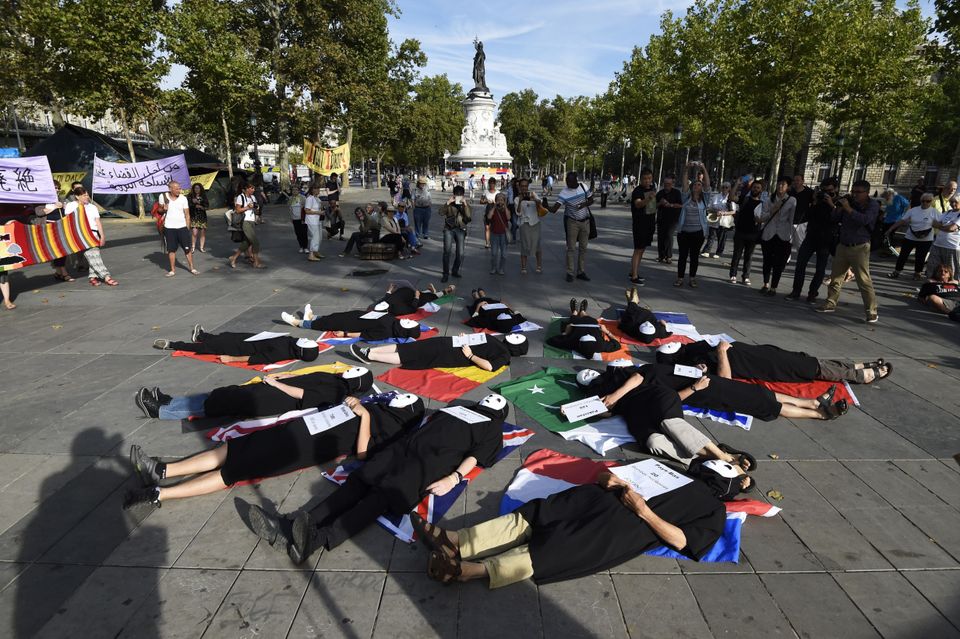
Anti-nuclear activists rally at the Place de la Republique in Paris, France, on Aug. 6, 2015.

Indian students take part in a rally to mark Hiroshima Day in Mumbai, India, on Aug. 6, 2015.
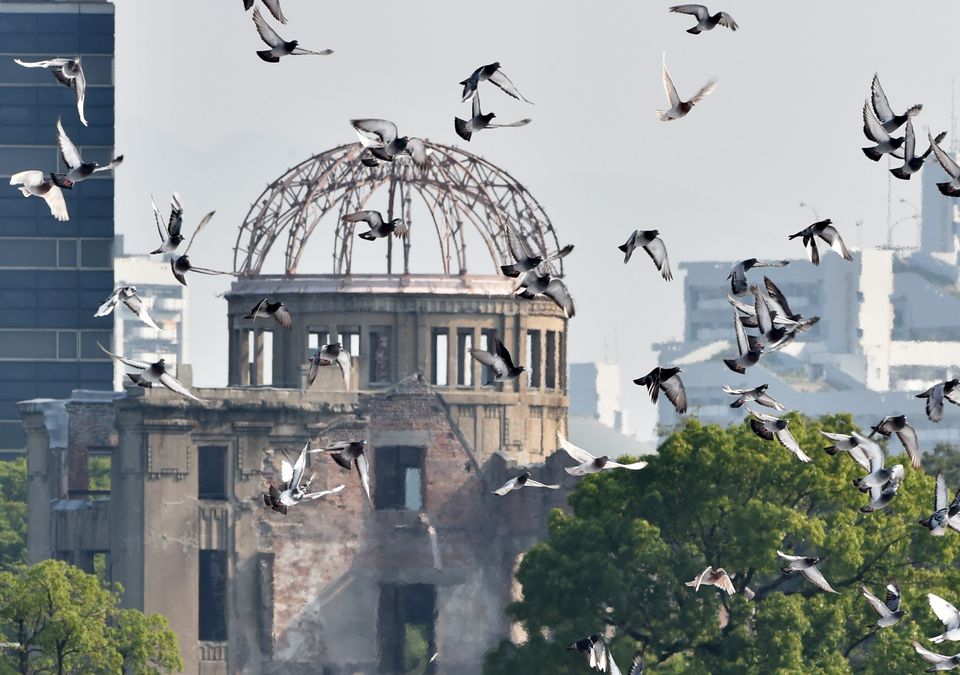
Doves fly over the Hiroshima Peace Memorial Park in Japan on Aug. 6, 2015.
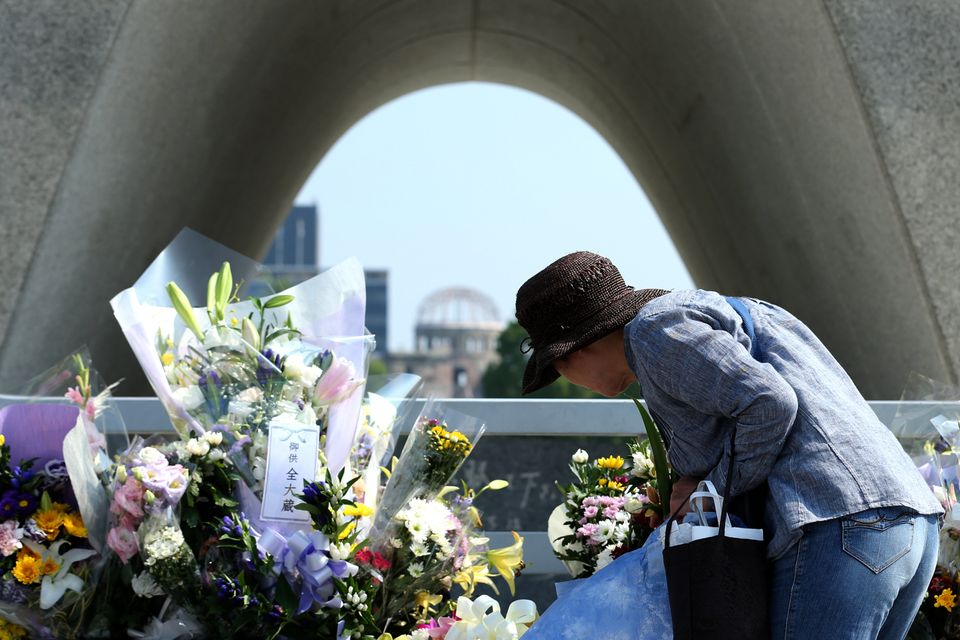
A woman places flowers by a monument at the Hiroshima Peace Memorial Park in Japan on Aug. 5, 2015.
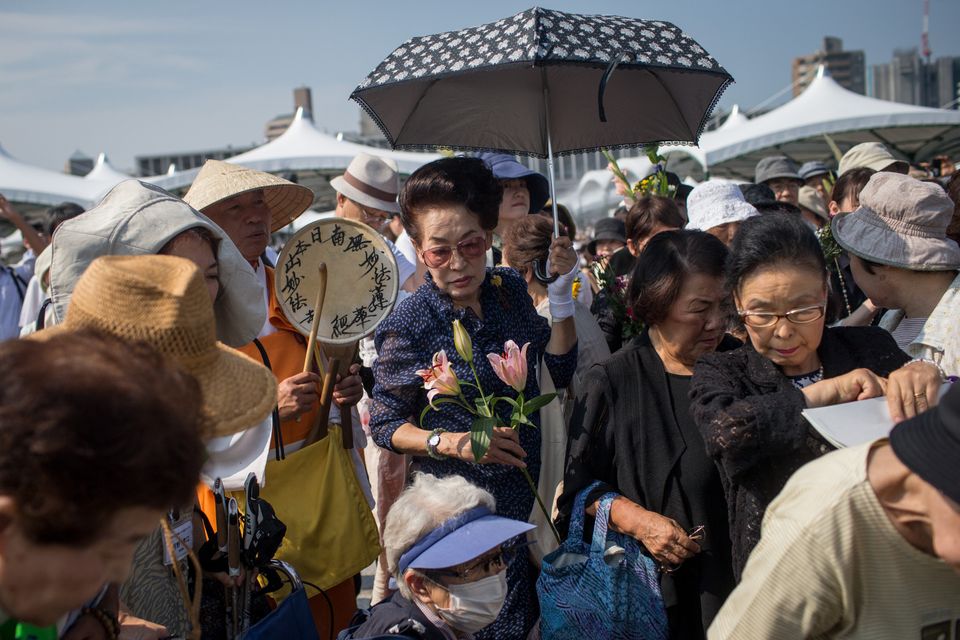
People lay flowers at the Hiroshima Peace Memorial in Hiroshima, Japan, on Aug. 6, 2015.
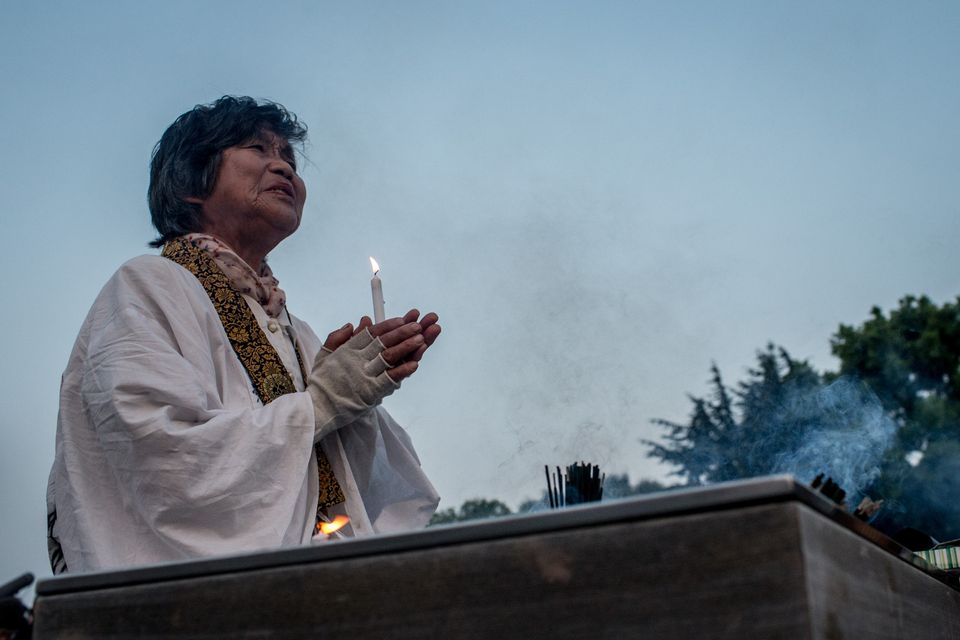
A woman offers prayers at the Hiroshima Peace Memorial Park in Hiroshima, Japan, on Aug. 6, 2015.
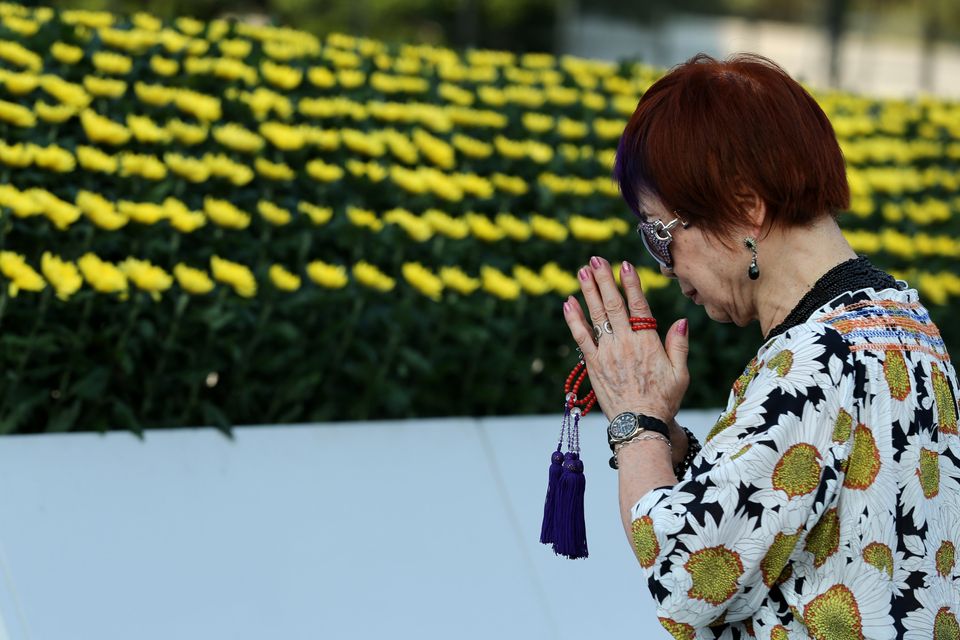
A woman offers prayers at the Hiroshima Peace Memorial Park in Hiroshima, Japan, on Aug. 5, 2015.
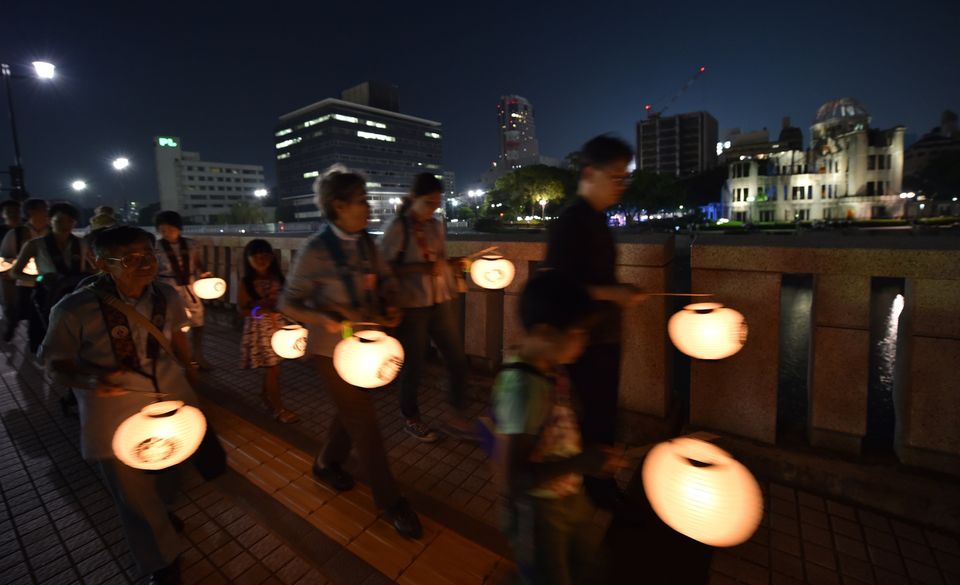
People march with lanterns near the the Atomic Bomb Dome in Hiroshima, Japan, on Aug. 5, 2015.